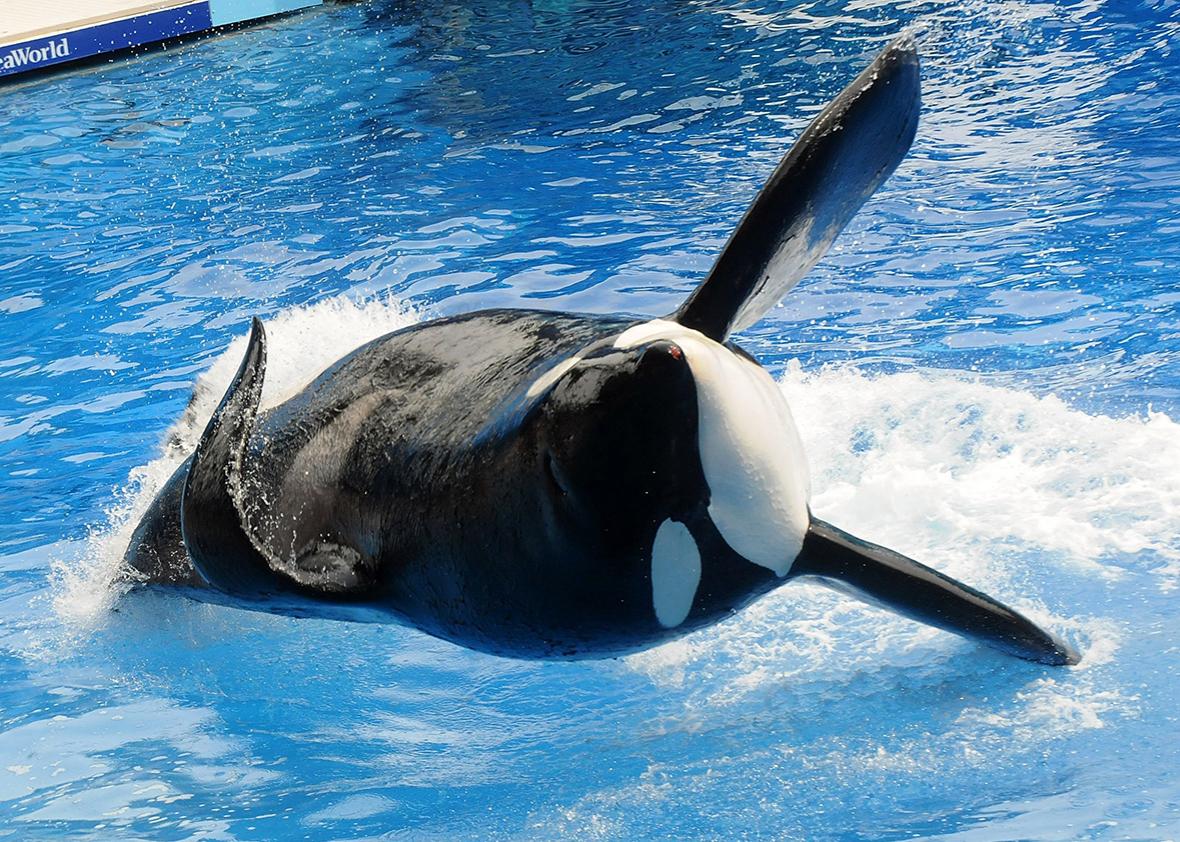Tilikum, a SeaWorld orca made infamous via the deaths he caused while in captivity, has died, likely from a bacterial lung infection, SeaWorld announced in a statement on Friday morning. Tilikum and his tumultuous life were the focus of the 2013 documentary Blackfish. His death comes after SeaWorld declared it would end its orca breeding program, primarily in response to outrage resulting from the documentary.
Tilikum himself was not bred in captivity: He was captured at about age 2 off the waters of Iceland.* He was later moved to Sealand of the Pacific in Canada, then, after his involvement in the death of the part-time trainer there in 1991, to SeaWorld Orlando, where he would live out the next 25 years of his life. SeaWorld estimates that he was 36 years old.
In his time at SeaWorld, he was not only a popular show orca, he was also involved in two more deaths: that of a man who snuck into Tilikum’s pool at SeaWorld after hours in 1999, and more famously, that of SeaWorld trainer Dawn Brancheau in 2010. Blackfish blasted the aquatic park for its treatment of its killer whales, which, it argued, became more aggressive and erratic because of their isolation, confinement, and lack of stimulation.
In 2016, SeaWorld voluntarily halted its orca breeding program and theatrical orca shows. For good measure, California passed the Orca Protection and Safety Act, which legally binds them to keep their promises at their original park in San Diego. (SeaWorld has additional parks in Orlando, Florida, and San Antonio, Texas, with plans to open another—without orcas—in Abu Dhabi.)
Thanks to this change, some have treated this death as the start of the end of SeaWorld orcas— Wayne Pacelle, the Humane Society’s president and CEO, released a statement expressing his sadness for Tilikum, named him part of the “last generation of captive orcas,” and stated that eventually, “the era of keeping these great animals in captivity will actually come to an end.”
Does Tilikum’s death actually mean the beginning of the end for captive orcas? Possibly. But there’s another option for SeaWorld, which Rachel E. Gross explained in Slate in April: SeaWorld can rehabilitate animals that have been rescued from the wild, and then, if they are deemed unreleasable, SeaWorld can keep the animals in captivity. And there are already claims that SeaWorld marks releasable orcas as unreleasable for its own benefit.
The most obvious route would be for SeaWorld to deem any useful animal that comes its way unreleasable and then claim it for its own purposes. (Capturing wild animals, without a permit, for scientific or educational use was outlawed in 1972 with the Marine Mammal Protection Act.)*
Some animal activists claim this already happens. John Hargrove, a former SeaWorld orca trainer who starred in Blackfish and testified this week on behalf of the Orca Protection Act, argues that SeaWorld can be overzealous in declaring animals “unreleasable.” He says that during his time at SeaWorld, it was common knowledge among staff that the park often kept releasable animals for its own benefit
Plus, SeaWorld’s statement announcing Tilikum’s death was none too promising, including assertions that Tilikum had lived a good life:
While today is a difficult day for the SeaWorld family, it’s important to remember that Tilikum lived a long and enriching life while at SeaWorld and inspired millions of people to care about this amazing species.
Tilikum’s life will always be inextricably connected with the loss of our dear friend and colleague, Dawn Brancheau. While we all experienced profound sadness about that loss, we continued to offer Tilikum the best care possible, each and every day, from the country’s leading experts in marine mammals.
Tilikum is a wild animal and should not be blamed for the deaths he caused. But SeaWorld’s insistence that the orca lived “a long and enriching life” is an affront to both Tilikum and his victims. And it’s certainly not a promising sign that SeaWorld is ready to be done with captive orcas.
*Correction, Jan. 9, 2017: Due to an editing error, this story originally misstated Tilikum was not bred in the wild. He was not bred in captivity. (Return.)
